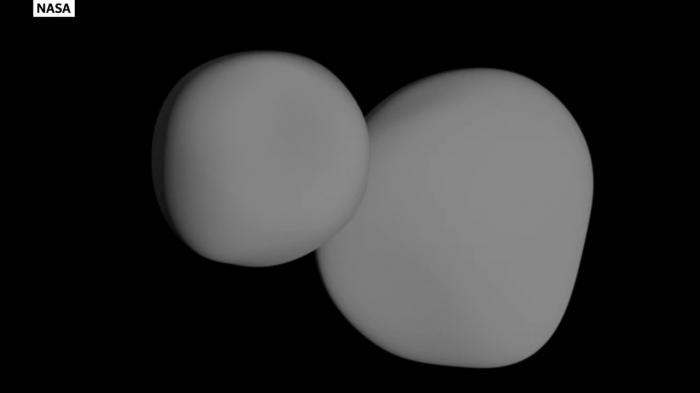Instead of the “snowman” initially proposed when New Horizons beamed back images from the depths of space, the object instead appears to have a flattened shape.
The new pictures show there is still a lot to learn about the object dubbed Ultima Thule, which is situated over 4 billion miles away from Earth.
It is situated in the Kuiper Belt, a region of the solar system beyond the eight major planets, comprised of icy bodies floating in space.
The “highly unusual” new look for Ultima Thule was captured around 10 minutes after the spacecraft passed by at its closest point, travelling at over 31,000 miles per hour.
“This really is an incredible image sequence, taken by a spacecraft exploring a small world four billion miles away from Earth,” said mission principal investigator Dr Alan Stern, a planetary scientist at the Southwest Research Institute.
“Nothing quite like this has ever been captured in imagery.”
The departure images revealed a shape that had previously been hidden as it was not illuminated by the sun.
Stringing together images taken as the spacecraft sped past the object revealed that the larger “Ultima” section was not spherical after all, but flattened like a pancake.
The pictures have raised questions among the scientific team about how such an object could have formed.
“We’ve never seen something like this orbiting the sun,” said Dr Stern.
The team were able to assemble the new images based on which stars were blotted out as the darkened part of Ultima Thule passed in front of them.
“While the very nature of a fast flyby in some ways limits how well we can determine the true shape of Ultima Thule, the new results clearly show that Ultima and Thule are much flatter than originally believed, and much flatter than expected,” said Dr Hal Weaver, New Horizons project scientist from the Johns Hopkins Applied Physics Laboratory.
“This will undoubtedly motivate new theories of planetesimal formation in the early solar system.”
The Independent
More about: NASA
















































